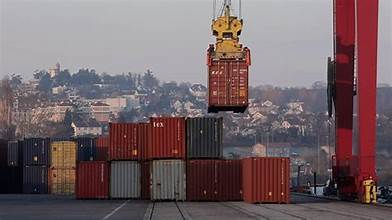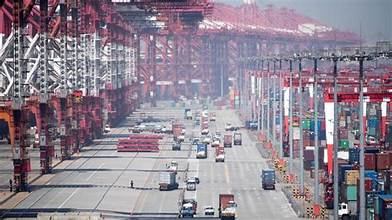The United States and China have announced a major breakthrough in their ongoing trade negotiations. Both nations agreed to reduce tariffs on selected goods for a 90-day period. This short-term economic truce aims to ease long-standing trade tensions, stabilize global markets, and give space for more diplomatic discussions.
The agreement was made public following a high-level meeting between U.S. Treasury Secretary Janet Yellen and Chinese Vice Premier He Lifeng in Beijing. The move is expected to bring temporary relief to businesses, boost investor confidence, and improve trade relations.
What the 90-Day Tariff Reduction Means
The agreement includes a mutual reduction in import tariffs across various product categories, including electronics, agricultural goods, and industrial components. While the specific percentages vary across sectors, the average tariff reduction ranges from 10% to 25%.

According to U.S. officials, this temporary policy will take effect starting June 1, 2025, and end on August 30, 2025. After this period, the two countries will re-evaluate the results and determine whether further extensions or permanent reductions are possible.
Why This Agreement Matters Right Now
This 90-day agreement is significant for several reasons:
- Eases pressure on global supply chains: Many American and Chinese companies have struggled with inflated costs due to years of tariffs and trade restrictions.
- Signals improving relations: The tariff rollback shows that both nations are willing to move past hostilities and focus on cooperation.
- Helps stabilize markets: Stock indexes in New York and Shanghai saw modest gains after the announcement.
Investors, manufacturers, and retailers across both nations are viewing this agreement as a step in the right direction.
Economic Impact on the U.S.
The American economy is expected to benefit from reduced import costs and improved supply availability. Major retail chains, such as Walmart and Target, anticipate reduced costs for consumer electronics and household products. Small businesses that rely on imported raw materials from China may also see an increase in profit margins during the 90-day window.

U.S. farmers, who have long suffered under retaliatory tariffs on soybeans and corn, hope this temporary relief could lead to long-term agricultural trade recovery.
According to a report by the U.S. Chamber of Commerce, the trade war has cost the U.S. economy over $60 billion since 2018. A 90-day reduction, while short, could save billions more in the coming months.
Impact on China’s Manufacturing Sector
China’s export-driven economy is also expected to gain from the agreement. Reduced tariffs mean greater access to the U.S. market, especially for electronics, automotive components, and low-cost manufactured goods.
Chinese companies like Huawei, Lenovo, and BYD, which have faced challenges entering the American market due to high tariffs, could see a rise in demand for their products.
According to analysts at Caixin Global, the Chinese government is also betting that this agreement will boost its domestic manufacturing sector amid slowing growth and youth unemployment.
Potential Challenges and Risks
While the agreement has been widely welcomed, several trade experts warn that it is only a temporary fix. Some of the challenges ahead include:
- No permanent resolution yet: The 90-day period is meant for further negotiations, not a final solution.
- Tariff structure still complicated: Many goods still face restrictions that were not addressed in this agreement.
- Political instability: With elections approaching in both countries, any change in leadership or policy direction could reverse the progress.
Furthermore, analysts warn that the U.S. and China must build long-term trust, not just short-term deals, if they want to end the trade war for good.
Businesses React with Cautious Optimism
Leading American and Chinese businesses have responded positively but cautiously. Apple Inc. praised the move as “a necessary step toward sustainable global supply chains.” Meanwhile, Alibaba called the agreement “a promising sign for cross-border e-commerce.”

However, both sides acknowledge the need for a stable, long-term framework. A joint business statement from the National Foreign Trade Council urged both governments to “use the 90-day period wisely to create permanent trade solutions that protect intellectual property, reduce red tape, and promote fair competition.”
A Timeline of the U.S.–China Trade War
- 2018: U.S. begins imposing tariffs on Chinese goods under Section 301.
- 2019: China retaliates with tariffs on U.S. agricultural products and cars.
- 2020: Phase One Trade Deal signed, but many issues unresolved.
- 2021–2024: Tariffs remain largely in place; tensions grow over tech and security.
- May 2025: 90-day tariff reduction agreement announced.
This timeline shows that while progress has been made, both nations have a long way to go toward normalizing trade relations.
What Comes After the 90 Days?
U.S. and Chinese negotiators plan to hold monthly follow-up meetings during the 90-day period. If successful, these discussions could lead to:
- An extension of the tariff reduction period.
- A broader trade deal covering services and digital commerce.
- Long-term agreements on climate-related trade policies and fair labor practices.
Experts suggest that both countries may announce a Phase Two agreement by the end of 2025 if progress continues.
Conclusion: A Positive Step with Room to Grow
The 90-day tariff reduction agreement between the U.S. and China is being seen as a much-needed reset button. It does not solve all the trade problems but opens the door to real diplomacy and economic cooperation. With proper negotiation and commitment, this short-term relief could lead to long-term gains.
For more detailed insights into global trade relations, visit the World Trade Organization (WTO) or explore the U.S. International Trade Administration.
Let’s hope this 90-day window leads to lasting peace and prosperity between the world’s two largest economies.
Also Read – U.S. and Saudi Arabia Sign Massive $1 Trillion Deal






